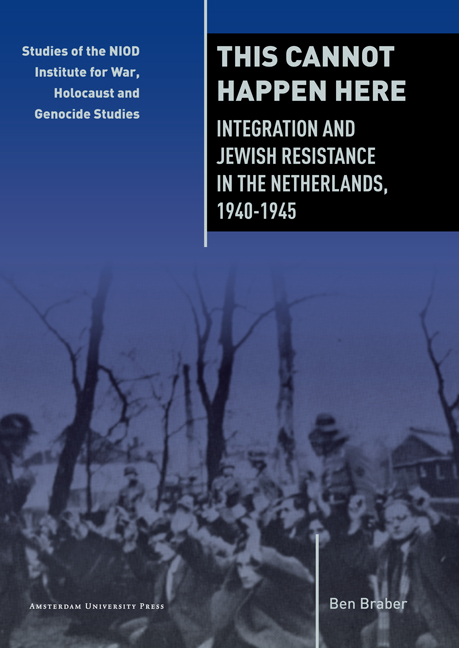3 - Changes in Jewish Rituals, Habits and Lifestyles
Published online by Cambridge University Press: 15 January 2021
Summary
Celebrating his sixtieth birthday in 1928, the Socialist Polak told a journalist of a provincial newspaper:
[The] study of Dutch civilization and the awareness of the country's beauty, in addition to my integration into Dutch society, explains my love for Holland. I consider myself to be a true Dutchman: a Dutchman among the Dutch, but also a Jew among the Jews.
Polak spoke these words in a period when negative attitudes towards Jews appeared to be weakening and Jewish participation in the Dutch economy, politics and arts was increasing. However, by 1940 some of these advances had been reversed. Furthermore, the way in which Jews defined their Jewish identity through rituals, habits and lifestyle was changing. While the Socialist leader may have felt integrated in 1928, the integration of Jews into Dutch society was hampered on the eve of the Second World War. During the 1930s a mixture of integration failings, changes in the wider Dutch society and international events contributed to anxiety among Jews in the Netherlands about their way of life, which turned into fear for their life when German troops invaded the Netherlands in May 1940.
Congregations, rabbis and rituals
Before their emancipation in 1796 the Jews in the Dutch republic had been organised in religious congregations that governed many aspects of their life, including the observance of rituals. These congregations largely followed the traditional divisions between Ashkenazi and Sephardic Jews, indicating the origins of these groups, with the first group coming from Germany and Eastern Europe and the second from the Iberian peninsula. However, with the emancipation of Jews in the Netherlands the congregations lost their control and by the middle of the nineteenth century the religious organisation was in disarray. For long periods there were no chief rabbis, who otherwise would ultimately have ruled on the application of Jewish law and determined the course of their congregations in conjunction with the lay leadership.
An institutional reorganisation took place in 1870 under government pressure, resulting in the formation of the Dutch Israelite Congregation and the Portuguese Israelite Congregation. The Dutch Israelite Congregation was the umbrella organisation for the majority of Dutch Jews and represented most synagogues.
- Type
- Chapter
- Information
- This Cannot Happen HereIntegration and Jewish Resistance in the Netherlands, 1940–1945, pp. 61 - 80Publisher: Amsterdam University PressPrint publication year: 2013



